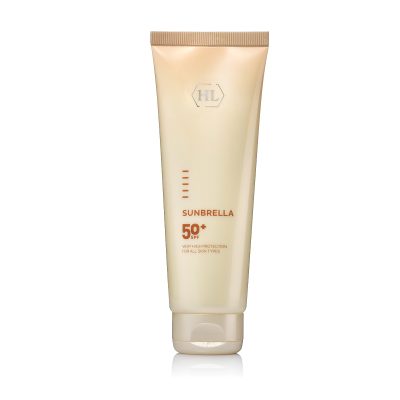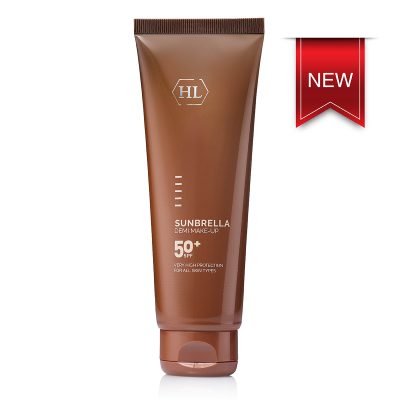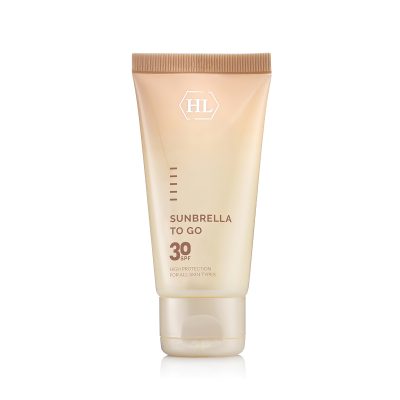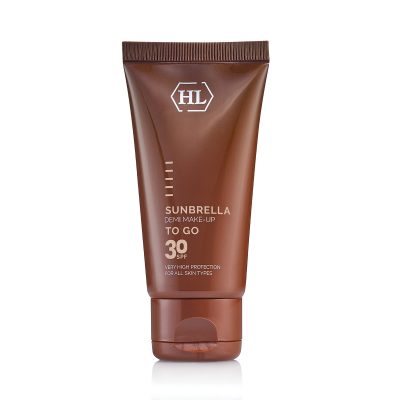Protecting the Skin from the Sun’s Radiation correction
The ultraviolet (UV) rays constitute 5% of the sun’s radiation. The exposure to this radiation is essential for the production of vitamin D in our bodies, which is responsible for the proper function of numerous systems in the body and for the prevention of multiple diseases. However, prolonged and accumulated exposure to this radiation is the central cause for the appearance of the photoaging damages, the acceleration of the skin’s aging and the premature appearance of wrinkles, pigmentation, spots and other sun damages. In addition, it may lead to the development of cancerous tumors on the skin, and constitutes the main environmental cause for skin damages and all types of skin cancer. In fact, the International Agency for Research on Cancer (IARC) of the World Health Organization has classified the ultraviolet radiation, as well as UV radiation emitting devices and tanning beds, as carcinogenic to humans (Group 1), with evidence associating them with melanoma and other types of skin cancer.
How exactly does the UV radiation cause skin damages, and how can the skin be protected from its damaging effect? These questions, as well as the subject of the awareness to the prevention of sun damages, were addressed by the United States Preventive Services Task Force’s (USPST) report, published in 2018. The report, which examined the latest studies regarding the connection between exposure to the ultraviolet (UV) radiation, skin damages and skin cancer, notes that the damage to the skin occurs through the damage to the skin cell’s DNA that leads to cell mutations. Each degree of tanning or skin tone changes following the exposure to this radiation represents damage to the cells, especially when accompanied by burns, blisters or pain—and mainly when occurring at a young age.

There are three types of ultraviolet rayes, classified according to their wavelength: UVA, UVB, and UVC, when the majority of the damage is caused by the UVA and UVB rays. Although the UVC rays, which have the shortest wavelength, have the most dangerous potential, they are predominantly absorbed by the ozone layer, and therefore do not reach the Earth’s surface. In contrast, the UVB rays, which have a medium wavelength, are completely absorbed in the epidermis, and they are the ones that cause visible damage—sunburns, redness, pain and blisters. The UVA rays, which are the longest, do not cause visible damages, but they do penetrate the dermis layer and cause damage to the skin cells’ DNA and the generation of pro-inflammatory components, which lead to the destruction of the collagen and elastin proteins. Besides skin cancer, these damages are expressed by a variety of skin damages such as skin spots of various degrees and types – including freckles, age spots, melasma spots, moles and hypopigmentation spots. Damages and changes in the blood vessels in the skin, the development of inflammation and skin problems such as rosacea, are also results of sun exposure. Besides these damages, sun exposure can encourage the early appearance of fine lines and wrinkles. Therefore, the protection from the UVB and UVA rays is particularly important.
Multiple studieshave unequivocally proven that the best protection strategies include: avoiding sun exposure during the hottest part of the day, during which the radiation levels are especially high; in the event of going out into the sun during those hours, wearing clothes and a hat in order to protect the skin, and using sunscreens, such which grant protection both from the UVA rays and the UVB rays. According to the studies, the sunscreens’ mechanism of action is based on their ability to protect certain genes, which operate to repair the damages of the radiation in the skin right when the damage occurs, and thus, in effect, they not only prevent the development of skin cancer, but also the premature aging of the skin and the appearance of various skin damages.
However, it turns out that despite extensive information campaigns led by health authorities in recent years, the awareness to the risks of exaggerated exposure to the sun is not high enough, especially among young populations, and there is also insufficient awareness to behaviors that prevent sun damages and to the use of sunscreens. Thus, for example, a study published in 2018 in journal Pediatric Dermatology, examined the behaviors that prevent sun damages among adolescents and young adults, and found that they rarely use sunscreens. Moreover, according to the United States Preventive Services Task Force’s report, even doctors’ awareness to the need to advise their patients regarding the use of sunscreens and the prevention of sun damages is very low. A survey included in the report found that doctors mentioned the need to use sunscreens in merely 0.7% of their appointments with patients in the clinic. Moreover, it was found that doctors mainly discussed the need to use sunscreens with their elderly patients, and in comparison, only rarely discussed this topic with their young patients, of all others, who are the ones frequently exposed to the sun.
An additional problem referred to by the report, and which was found by many studies in recent years, is that even when people use sunscreens, they do it incorrectly.
Firstly, they often fail to apply a sufficient amount of the product, and as a result, it does not provide enough protection. In order for the product to provide optimal protection, it is important to apply a sufficient amount of it—2 milligrams of sunscreen for every 2 square centimeters of skin (2 mg/cm2). In spite of this, it was found that most people apply amounts that are between a quarter to half of the recommended amount.
Secondly, many people use sunscreens with an SPF that is too low. The SPF (Sun Protection Factor) is a measure that expresses the product’s skin protection ability through the screening of the radiation. This measure is defined as the ratio between the amounts of radiation that causes redness in the protected skin compared to unprotected skin. Namely, how much longer does it take until the appearance of redness due to the exposure to the UV radiation while using the sunscreen, in comparison to skin to which sunscreen was not applied. For example, 15 SPF multiplies the time it takes the sun to burn the skin by ten. The meaning is that light skin, which is burned without protection after 10 minutes of exposure, will be burnt in the same rate after 150 minutes (approximately two and a half hours) when protected with sunscreen. Studies from recent years indicate that sunscreens with a high SPF provide much more efficient protection from the sun compared to products with a relatively low SPF. As a result of these studies, the health authorities in the world have changed their regulations in the past few years, and they now recommend using products with a relatively high SPF, starting from 30, and advisably even 50 and more. Products with 6–10 SPF are considered to have lower protection and manufacturers are required to include a warning on the labels of the products containing 6-15 SPF that states: “Reduces burn risk; does not prevent skin cancer”. Products with 15-25 SPF are considered to have a medium level of protection and products with 30-50 SPF are considered to have a high level of protection. Finally, products with 50 or more SPF are considered to have a very high level of protection.
The sunscreen must be applied to all of the exposed skin areas, and especially on the face, tips of the ears, neck and décolletage, and also to the hairless areas on men’s scalps, and this should be done 15–30 minutes before going out to the sun. It is recommended to reapply the sunscreen every 2–3 hours. Furthermore, it is necessary to reapply the sunscreen after every activity that may cause its removal, such as, swimming, face washing, perspiration, etc. For women, it is recommended to use, in addition to the sunscreen, makeup that contains SPF.



